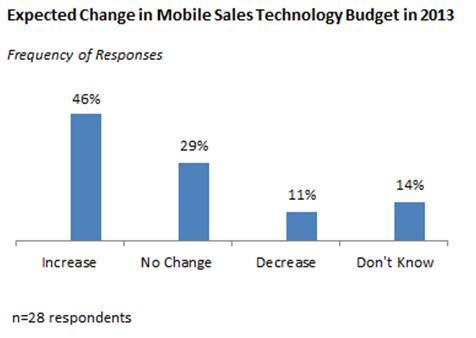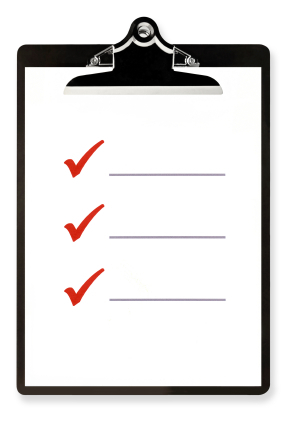Brent Adamson's Blog, page 14
April 15, 2013
3 Steps to Driving World-Class Coaching Practices
 The NCAA March Madness has come to an end and a champion has been crowned. Often called the “greatest” playoff by sports enthusiasts and now it’s over. It’s over for us, it’s over for your pools, and it’s over for the teams, players, and coaches. But it really isn’t over for the teams.
The NCAA March Madness has come to an end and a champion has been crowned. Often called the “greatest” playoff by sports enthusiasts and now it’s over. It’s over for us, it’s over for your pools, and it’s over for the teams, players, and coaches. But it really isn’t over for the teams.
A new season for them begins, the off season. And this is where coaches really work to earn their keep. They poured time and effort into the current season, taking each game one at a time. Now, they have to look at new rosters and upcoming schedules. They need to plan their off season workouts.
For us in Sales, it’s no different. Just because sales professionals have their quarterly goal, monthly goal, or are on pace to hit our yearly marks – as managers, we still need to be thinking long-term. We still need to be coaching, building plans, being innovative, and empowering our teams.
With that said, we still have choices to make. Where do we spend our time? What do we focus our efforts on? Where can we great the greatest benefit to the overall team? How do we help sales reps met or exceed their goals and long-term career goals? It’s a lot to consider.
At CEB Sales, we’ve spent extensive time and effort in answering those questions and more. And in fact, we’ve worked to package it in an easy to use, self-guided, and updated Coaching Topic Center. Here are a few items to think about as you come out of March Madness:
Maintain Coaching Discipline: You can do this by having a common, agreed-upon definition of coaching
Refine Managers’ Coaching Approach: As customer buying has become more complex, managers must address the different, emerging needs of their sales force
Assess and Certify Coaching Capabilities: Leading sales organizations create a culture of coaching and ensure that managers are continually assessed and certified in coaching.
While college basketball teams have an off season to prepare and get ready for next fall, sales doesn’t have an offseason. We need to address coaching gaps immediately and drive for long-term success and behavior change in sales teams. For those that are putting effort and rigor around coaching, are the ones I’m picking in my tournament bracket!
CEB Sales Members, review the updated Anatomy of World-Class Sales Coaching Practices, a diagnostic tool that evaluates current coaching practices and outlines a model for effective sales coaching.
April 2, 2013
Why Your Customers Don’t Care
 In the current era of sales where reps are selling to better informed, empowered customers that are able to diagnose their needs, identify potential solutions, and decide what they’re willing to pay without ever having to contact a supplier, the ability to effectively lead with insight and reframe customer thinking has become an absolute necessity. That said, developing an organizational capability to effectively deliver commercial insight is no easy task.
In the current era of sales where reps are selling to better informed, empowered customers that are able to diagnose their needs, identify potential solutions, and decide what they’re willing to pay without ever having to contact a supplier, the ability to effectively lead with insight and reframe customer thinking has become an absolute necessity. That said, developing an organizational capability to effectively deliver commercial insight is no easy task.
Once companies have taken the time to develop solid, scalable insights that are ultimately tied to their unique capabilities as a supplier, they still face another hurdle: upskilling their sellers to successfully Challenge customers with this new messaging. This means going beyond simply training reps to speak to the new pitch deck’s prescribed talking points to commercially teaching customers. Companies must also ensure that reps can tailor their pitch to the individual customer stakeholders they engage while leveraging constructive tension to take control of the buying process as a whole.
But left to their own devices, reps tend to spend a lot of time memorizing their pitch, and then re-using that pitch with all customer stakeholders, regardless of the individual’s role or function. But given that customer stakeholders have different functional responsibilities, goals, and day-to-day worries, even the best insight, if positioned poorly, will fail to resonate and will therefore have little commercial impact.
So how can you help reps deliver more resonant messages? Solae, LLC overcomes this challenge by helping its sales force better understand customers by providing reps with “cheat sheets” of role-specific goals and concerns. Understanding the outcomes each customer contact is trying to accomplish helps reps to tailor their pitches in-the-moment and speak the customer’s language.
Mainly, Solae’s cheat sheets expose the following factors that underlie each influencer’s decision-making, better equipping reps to articulate the implications of action or inaction in customer terms:
Decision Criteria: Knowing the high-level business outcomes for which customers are responsible leads reps to speak to the metrics a solution must impact to drive urgency.
Focus: Understanding which parts of the business a customer cares about enables reps to frame their offering in terms of its impact on these areas.
Concerns: What does the customer personally worry about day-to-day? Having this context enables reps to build empathy and credibility by appealing to fears and doubts.
Potential Values: Knowing specific levers to drive business outcomes helps focus reps on supplier capabilities most likely to create value for that particular individual.
In addition to the cheat sheets, Solae provides reps with simple “solutions” documents that explain how Solae’s differentiators map to each contact’s function. With these tools, sales reps are better able to tailor their approach by predicting a narrow set of outcomes and benefits a customer stakeholder will care about which enables them to better align their messaging to the underappreciated Solae capabilities best suited to impact those outcomes.
SLC Members, to learn more, read the full case study on Solae, LLC’s message-tailoring approach or view the webinar replay, Tailoring Sales Messages to Customer Stakeholders.
April 1, 2013
Are You Planning for Mobile’s Emerging Role?
 Organizations often struggle to provide timely and relevant information to salespeople. One way of bridging this gap is by providing real-time mobile support, on-and-off the field to improve process efficiencies. In fact, realizing the value of mobile support for salespeople, a recent CEB Sales survey shows that 46% of sales organizations are increasing their mobile budgets.
Organizations often struggle to provide timely and relevant information to salespeople. One way of bridging this gap is by providing real-time mobile support, on-and-off the field to improve process efficiencies. In fact, realizing the value of mobile support for salespeople, a recent CEB Sales survey shows that 46% of sales organizations are increasing their mobile budgets.
In an earlier blog, we had mentioned five key mobile capabilities that companies use or explore to improve sales efficiency—task and schedule management, real-time availability to CRM, access to BI and sales analytics, customer collaboration and interaction, information exchange and remote coaching. Our research shows that the popularity of back-end mobile capabilities like task and schedule management and CRM is fairly high. On the other hand, analytical activities like BI and sales analytics or interactive activities like customer collaboration, internal information exchange, and coaching are less popular, but drive greater efficiency.
To provide mobile capabilities ranging from back-end to analytical to interactive capabilities, we see progressive companies follow a structured path of moving from “Established” to “Emerging” mobile capabilities.
“Established capabilities” include back-end and tactical activities like agenda management or customer account access and updates. And even within these activities, we see a greater focus on low-complexity, non-customer facing activities that increase productivity or drive efficiency. This is primarily done to demonstrate the value of mobile support and build broad level acceptance and comfort amongst the sales force.
“Emerging capabilities” include analytical and interactive activities like business analysis, performance analysis, ROI modeling, and remote coaching. Leading companies recognize these activities as high value-add activities but believe these can be rolled out only at later stages, after systematically building salesperson confidence with mobile usage. Early adopters in some companies are already using certain aspects of emerging capabilities like Yammer and Chatter for information exchange, and even performance analysis to identify coaching areas.
Leading companies recognize that as the sales environment becomes more complex, the role of mobile as an effective sales tool that provides updated and timely information to the sales force will grow in importance. Indeed, companies that are tracking mobile effectiveness are seeing an uptick in task and business efficiency, a key reason for increase in mobile usage across the sales force.
How are you using mobile in sales? Which sales functionalities are you targeting and what has your experience been?
Is Your Salesforce Mobile-Ready?
 Organizations often struggle to provide timely and relevant information to salespeople. One way of bridging this gap is by providing real-time mobile support, on-and-off the field to improve process efficiencies. In fact, realizing the value of mobile support for salespeople, a recent CEB Sales survey shows that 46% of sales organizations are increasing their mobile budgets.
Organizations often struggle to provide timely and relevant information to salespeople. One way of bridging this gap is by providing real-time mobile support, on-and-off the field to improve process efficiencies. In fact, realizing the value of mobile support for salespeople, a recent CEB Sales survey shows that 46% of sales organizations are increasing their mobile budgets.
In an earlier blog, we had mentioned five key mobile capabilities that companies use or explore to improve sales efficiency—task and schedule management, real-time availability to CRM, access to BI and sales analytics, customer collaboration and interaction, information exchange and remote coaching. Our research shows that the popularity of back-end mobile capabilities like task and schedule management and CRM is fairly high. On the other hand, analytical activities like BI and sales analytics or interactive activities like customer collaboration, internal information exchange, and coaching are less popular, but drive greater efficiency.
To provide mobile capabilities ranging from back-end to analytical to interactive capabilities, we see progressive companies follow a structured path of moving from “Established” to “Emerging” mobile capabilities.
“Established capabilities” include back-end and tactical activities like agenda management or customer account access and updates. And even within these activities, we see a greater focus on low-complexity, non-customer facing activities that increase productivity or drive efficiency. This is primarily done to demonstrate the value of mobile support and build broad level acceptance and comfort amongst the sales force.
“Emerging capabilities” include analytical and interactive activities like business analysis, performance analysis, ROI modeling, and remote coaching. Leading companies recognize these activities as high value-add activities but believe these can be rolled out only at later stages, after systematically building salesperson confidence with mobile usage. Early adopters in some companies are already using certain aspects of emerging capabilities like Yammer and Chatter for information exchange, and even performance analysis to identify coaching areas.
Leading companies recognize that as the sales environment becomes more complex, the role of mobile as an effective sales tool that provides updated and timely information to the sales force will grow in importance. Indeed, companies that are tracking mobile effectiveness are seeing an uptick in task and business efficiency, a key reason for increase in mobile usage across the sales force.
How are you using mobile in sales? Which sales functionalities are you targeting and what has your experience been?
March 25, 2013
Make Your Next ROI Conversation Impactful
 We all want to run to the logical reason—a customer is going to save money, make money, or mitigate risk—and that’s certainly important. But don’t be in such a rush to put those return on investment (ROI) figures in front of your customers. If you run too quickly to the logical reason of why a customer should buy your solution, your pitch may fall flat.
We all want to run to the logical reason—a customer is going to save money, make money, or mitigate risk—and that’s certainly important. But don’t be in such a rush to put those return on investment (ROI) figures in front of your customers. If you run too quickly to the logical reason of why a customer should buy your solution, your pitch may fall flat.
Why? It’s simple. Customers care about their business, not yours.
Being successful in today’s selling environment requires us as salespeople to tap into our emotional side as well as our logical side. At the end of the day, we need to be storytellers. We need to convey ideas that should frankly “scare the heck” out of customers! Take customers to the dark place, before showing them the light at the end of the tunnel—which is of course a new path forward that leads those customers to value the unique things that make your company and your solution, special.
But where do compelling stories come from?
Well, here’s a quick thought exercise to get you started. Think about the next customer conversation on your calendar and ask yourself the following questions:
What’s my hypothesis for the business problem this customer is currently facing?
What do I know about this problem that the customer either doesn’t know, or has failed to recognize?
How should the customer go about resolving that challenge?
Now, try answering those questions without including your company’s products, services, or solutions in the response.
Absent of your company’s offerings, the answers to those questions provide the building blocks for a powerful story and help you to introduce new perspectives to customers during your pitch that will capture his/her attention. This will then allow you to build the business case for why that new perspective matters.
That’s the key to building a world-class ROI calculator. Don’t build the business case around the “ROI of buying your stuff”—instead, build the story around the “ROI of solving the problem you just taught the customer they have”.
Another way to think about this is to focus on ROPE versus ROI, where ROPE = Return on Pain Eliminated. What is the expected return a customer can expect if they eliminate the pain that we just taught them about.
SLC Members, learn more about building a commercial teaching pitch.
How to Build a Key Account Talent Pipeline
 Sales organizations are often challenged to source and upskill talent into key account roles. Finding candidates with the required skill set, customer knowledge, and relational fit to customers is difficult.
Sales organizations are often challenged to source and upskill talent into key account roles. Finding candidates with the required skill set, customer knowledge, and relational fit to customers is difficult.
Beta Company (pseudonym), a high technology firm, struggled to find sufficient candidates with the necessary skills within the sales organization or outside the function that possessed cross-silo product knowledge and experience. In addition to lack of skills, Beta also struggled to ensure that selected candidates would also be a relational fit for specific customer segments.
Beta created a formal certification program that evaluated Key Account Management candidates against segment-specific customer needs. Talent was sourced across functions, such as Marketing and Finance, based on a set of basic prerequisite skills for the KAM role and specific skills required for particular customer segments. For example, all candidates must have strong business acumen skills, excellent negotiation skills, strategic planning ability, and achievement of some threshold of performance.
Once candidates were selected, they were developed for the role within a particular segment through classroom and on-the-job training. Beta Company created individual development plans that provided opportunities to learn the required skills and also demonstrate proficiency in critical areas. For those whose capabilities do not display mastery of the required skills, or who opt out of the development track, were offered alternative career options.
Beta Company further evaluated certified candidates based on their resumes to determine who will be the best fit for particular customer segments. After this pre-screening, customers were able to interview the candidates and make the final hiring decision. Through this opportunity to match candidate and customer, Beta was able to ensure a better relational fit for its Key Account Managers.
As a result, Beta saw an improvement in customer relationships and decreased churn in the KAM role. After the segment-based KAM certification and deployment program, there were four times less customer requests for KAM replacement and KAM roles were filled twice as quickly. The certification also ensured candidates were more qualified and had appropriate expectations for the KAM role. It also facilitated customer-manager relational fit through customer involvement in the selection process.
SEC members, learn more about how Beta selected and certified its Key Account Managers. Also, read more about Key Account Management strategy and check out the Key Account Topic Center for more best practices on improving Key Account management.
March 19, 2013
Measuring Sales Force Effectiveness
 How do you measure the effectiveness of a sales force? Most companies agree that revenue and margins are key indicators of health. At the individual level we can examine gap-to-goal. But those metrics are lagging indicators. They also don’t tell us much about the quality or effectiveness of those results. How do we really know we’re getting the most out of our sales organization?
How do you measure the effectiveness of a sales force? Most companies agree that revenue and margins are key indicators of health. At the individual level we can examine gap-to-goal. But those metrics are lagging indicators. They also don’t tell us much about the quality or effectiveness of those results. How do we really know we’re getting the most out of our sales organization?
It’s a complex question, with many variables. Further, the answer will change over time and will vary from company to company. However, there are ways to compartmentalize it and break it down. Here is a short list of approaches sales organizations often take to understand sales force effectiveness:
Delivering on corporate strategy—Think about it in terms of not what Sales is doing, but what Sales is doing to meet corporate objectives. What are the things we’re doing to grow revenue and increase profitability, grow cash flow, etc? What are the key objectives that we are looking to achieve? Then, what are the processes that enable these things? How do we improve them?
Where/how sales reps spend their time—Where do reps spend their time? Are they spending it on the right activities? On the right opportunities? With the right customer stakeholders? There are a number of ways to start answering these questions.
At the highest level, think through coverage and segmentation models. Do we have time to serve all our customers equally? Do we want to serve all customers equally? One facet of this is to first assess if we’re spending the right time with the right accounts. To do that, we’ll want to think about our segmentation and coverage models. (CEB Sales members, learn how you can optimize your go-to-market strategy).
When it comes to individual sales reps and how they spend their time, companies often compare time spend to sales performance (called a time/productivity analysis; learn more here) to identify and differentiate between high value activities and low value activities. You can eliminate/offload/automate the low value activities, and redirect reps toward the high value activities.
Lastly, you can examine the deals that reps pursue and how they pursue them. This has implications on opportunity qualification, stakeholder identification, engagement strategies, and the sales process (CEB Sales members, learn more about opportunity qualification and focusing on the right customer contacts).
The quality/effectiveness of sales rep efforts—How do we not only measure how reps spend their time, but also measure the quality of those interactions?
One way is through metrics selection and the identification of leading indicators. Do we know what activities have the biggest correlation with customer outcomes, and are we measuring those?
A second way is through customer verifiers. Many sales rep activity metrics don’t go far enough—the fact that we met with a customer or sent a proposal tells us nothing about the quality of that meeting or their likelihood to actually buy from us. Instead of measuring our activities, we can identify customer verifiers—binary, tangible, concrete customer actions—that more accurately place customers in their buying process. By embedding customer verifiers into our pipelines, we can better track the effectiveness of our activities. (CEB Sales members, learn how you can use customer verifiers to improve forecasting accuracy).
The effectiveness of the processes we enable—While the last two items were focused on how reps invest their time, this one looks at where Sales and Sales Enablement should spend their time. While there are a number of things we can do to increase the effectiveness of the sales organization, which will have the biggest impact on the sales force? How do we know we’re performing at peak level for any given area?
CEB has compiled decades of quantitative analysis and best demonstrated practices in the world of sales and built the Anatomy of a World Class Sales Organization. The Anatomy allows your leadership team to assess performance against the definition of world-class across 24 attributes of a sales organization. The diagnostic is meant to help you prioritize and identify a short list of areas where you will have the greatest impact on the performance of sales force. You can also benchmark your organization against others who have completed the diagnostic.
It’s not just what you sell, it’s how you sell—As sales continues to grow into a more complex function, it’s not just good enough to measure gap-to-goal. There’s a right way and a wrong way to close business. You also need to understand the behaviors reps bring to the job and if they are selling the right way. We’re seeing leading edge companies give competencies far greater weight when it comes to evaluation, performance review, and advancement. Many organizations have started to work behaviors into their compensation plans. See how the best organizations are certifying rep behaviors and business outcomes in addition to gap-to-goal for sales reps and sales managers.
How we measure impact of investments—Whether you choose one or a combination of the above approaches, we’re going to have to measure the impact. There are a couple ways we’ve seen companies isolate the impact of different sales enablement efforts. The most important step is to first take an outcomes-back approach and pre-agree on metrics you’d expect to see from behavior change.
What did we miss? Are there other approaches you’ve used?
March 18, 2013
Is Your Sales Culture Helping or Hurting Reps?
 Most sales organizations today are investing in changing their selling approach in response to increasingly informed buyers. That said, few organizations are seeing commensurate returns in rep selling behavior. As we get ready to preview the results of our 2013 research study, we can’t help but notice a disconnect between the new expectations that most organizations have set out for reps, and the sales environment or culture they operate in.
Most sales organizations today are investing in changing their selling approach in response to increasingly informed buyers. That said, few organizations are seeing commensurate returns in rep selling behavior. As we get ready to preview the results of our 2013 research study, we can’t help but notice a disconnect between the new expectations that most organizations have set out for reps, and the sales environment or culture they operate in.
Our findings thus far indicate that every Head of Sales struggling to drive long-lasting transformation must first ask his or herself the following questions:
Do I have a talent base capable of selling in a complex selling environment?
Are my organization’s sales processes helping or hurting my rep’s ability to sell?
Are my incentives aligned to the new outcomes that I am trying to drive?
Are sales managers enforcing rules, or supporting and enabling their teams to succeed?
If these answers are giving you discomfort, you are not alone. Our research indicates that while most sales leaders are asking their reps to change how they approach sales interactions, few have a sales environment or culture that allows reps to change how they sell. In fact, most sales organizations currently have in place strong barriers to behavior change. Most of these barriers, such as misaligned incentives, remain in place from a time when organizations were trying to maximize sales efficiency. But, as the world of sales shifts away from transactional selling to complex selling, the legacy sales environment that remains must also change.
So how exactly should sales culture change?
CEB Sales Members, be among the first to know what our research says by registering now for an upcoming Executive Retreat or Regional Briefing session. Also, review the latest observations from our conversations with sales leaders on how to drive effective sales transformations.
Share with us what impact sales culture is having on your organization.
March 12, 2013
How Not to Lose a Lead
 A successful sale often starts with a well-qualified lead. But, that’s only half the story. What’s equally important is the salesperson that nurtures and closes that lead. Because, we all know even a well-qualified lead in the hands of a salesperson that cannot engage the customer is as good as no lead.
A successful sale often starts with a well-qualified lead. But, that’s only half the story. What’s equally important is the salesperson that nurtures and closes that lead. Because, we all know even a well-qualified lead in the hands of a salesperson that cannot engage the customer is as good as no lead.
That’s not to say leads should only be handed out to your highest-performing salespeople (though many organizations do this actively, pushing the most prized leads to their top performers). Even high performers are prone to losing leads, making this more than just about having the right skills.
Needless to say, sales organizations have traditionally focused on getting the first half of the equation right—creating sophisticated lead qualification filters that churn out the most promising leads. Viable leads typically enter a CRM or SFA system that uses formulas based on standard territory assignments and salesperson workloads to send leads to the most appropriate business units and salespeople.
While such a system creates efficiency and clear lines of ownership, it fails to account for one phenomenon in particular that is more important in today’s selling environment than ever before—and that is the proximity of the lead to the salesperson. But, here’s the twist—not the geographic proximity that most companies typically use to assign leads, but the social proximity of the lead to the salesperson.
The importance of social media in B2B sales was one of the most surprising findings in our research last year. In fact, we found that the best salespeople don’t rely on Marketing at all for leads, instead use their own social networks and personal brands for lead generation. And, for good reason; social media is increasingly where customers learn to get ahead in the sale (the very task you hire salespeople for). It’s all about positioning oneself as a key influencer within your customer’s social networks.
This has implications for lead assignment as well. In talking to sales leaders across industries and geographies, we came across Network Hardware Resale, a provider of networking and datacenter solutions, which uses social proximity as an alternative to traditional territory allocation models.
The company evaluates a salesperson’s social proximity to an opportunity using their LinkedIn, Facebook, and Twitter connections to the prospective account’s key stakeholders, increasing the likelihood that opportunities are assigned to a salesperson with leveragable connections. Naturally, customers are more likely to engage in a dialogue with someone that shares a common contact, network, or interests.
While the approach is early in its use, Network Hardware Resale is already seeing some dramatic results. In particular, they’ve seen a huge spike in meeting acceptance rates, with reps more likely to get a foot in the door than ever before. In addition, the company has also seen an increase in overall new business sales.
The good news is that much of this capability already resides within your organization, and is probably already being leveraged informally by your sales force. You can use it to better manage your leads.
SEC Members, learn more about how Network Hardware Resale uses social proximity to manage leads. Also, read our full study about Getting in Early: Shaping Demand Through Pre-Funnel Engagement.
Don’t Leave Skill Application to Chance
 Despite running a world-class sales training event, getting salespeople to apply new skills is hard. In fact, SEC analysis has found that reps forget 87% of the information they are taught within one month of training. A key reason for this—traditional training programs fall short because they do not provide reps with fail-safe opportunities to practice and embed new skills into their daily workflow.
Despite running a world-class sales training event, getting salespeople to apply new skills is hard. In fact, SEC analysis has found that reps forget 87% of the information they are taught within one month of training. A key reason for this—traditional training programs fall short because they do not provide reps with fail-safe opportunities to practice and embed new skills into their daily workflow.
To solve this issue, Blue Cross Blue Shield of Michigan created a 12-week program that occurs after the traditional classroom training, and combines live-fire skill application with customers followed by peer deconstruction of the skill application. Reps, along with their managers, choose 1-2 low risk customers to try the new skill on throughout the 12-week period. After applying the skill, reps get together to share application stories, helping socialize the new behaviors and learning from their peers.
Typically, reps are required to share at least one positive and one negative experience, give a detailed account of the customer reactions with quantifiable outcomes. Doing this in a group setting amongst their fellow peers provides reps with several benefits and learning opportunities that include:
Reflection: Gives reps time to absorb key learnings in a low pressure environment
Exploration: Risk-free environment builds confidence in reps to try new skills
Validation: Group perspectives and comments help reinforce successes
Context: Reps can tie the application of a single skill into broader training concepts
After piloting the program with new hires, BCBS has seen 39% of those new hires performing in the top half of sales reps company-wide within 12 months— and 21% are in the top quintile.
SEC Members, to learn more, listen to a webinar with Peter Long, Sales Training Consultant at BCBS of Michigan, and read the full study Boosting Sales Training Stickiness.
Brent Adamson's Blog
- Brent Adamson's profile
- 9 followers



